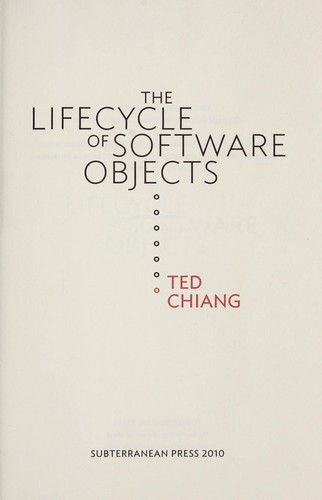jonn reviewed The Lifecycle of Software Objects by Ted Chiang
Extremely quotable vignettes full of grey-area questions, those of us who are capable of empathy intuitively know the answers to
5 stars
“People say being corporation great,” says Marco. “Can do whatever want.”
Chaing is a genius of mental experiments! The lifecycle of software objects is, in a way, similar to Egan's Permutation City, except with way less literary pretense.
I would normally object, but in this case, it reads like a mockumentary book, which isn't something I've ever read. Or like a postmodern epic.
It's a very sad book too. From broken superficial connections between people to horrific treatment of digital animals by the abusive minority, the life has a backdrop of misery. Against this backdrop, enthusiasm and the fighting spirit of creators shines with a feeble ray of optimism, but to what end. Or to what ending.
Five stars, the quote up top.
“People say being corporation great,” says Marco. “Can do whatever want.”
Chaing is a genius of mental experiments! The lifecycle of software objects is, in a way, similar to Egan's Permutation City, except with way less literary pretense.
I would normally object, but in this case, it reads like a mockumentary book, which isn't something I've ever read. Or like a postmodern epic.
It's a very sad book too. From broken superficial connections between people to horrific treatment of digital animals by the abusive minority, the life has a backdrop of misery. Against this backdrop, enthusiasm and the fighting spirit of creators shines with a feeble ray of optimism, but to what end. Or to what ending.
Five stars, the quote up top.


